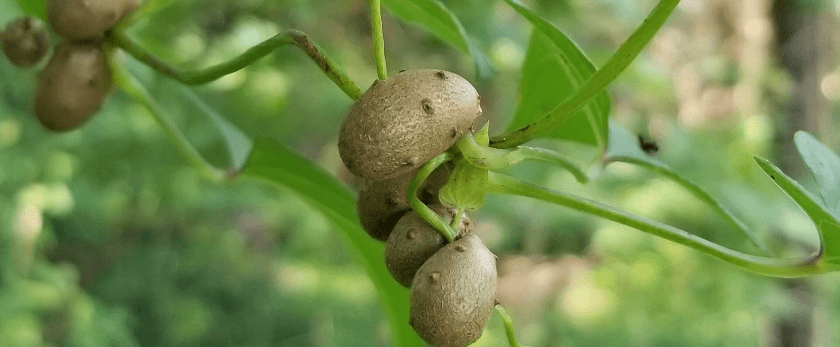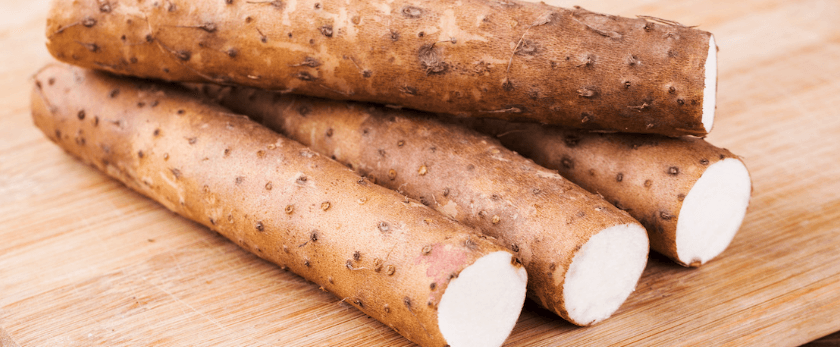Chinese yam, also known as Dioscorea opposita, is a versatile and nutritious root vegetable that has been cultivated for centuries in Asia. It is a hardy plant that can be grown in a variety of climates and soil conditions, making it a great addition to any garden. Not only is it easy to grow, but it also has numerous health benefits and is a sustainable choice for your garden. In this article, we will discuss how to grow Chinese yam and provide tips for caring for this plant in an eco-friendly manner.
What is Chinese Yam?
Chinese yam is a perennial vine that belongs to the Dioscoreaceae family. It is native to China, Japan, and Korea, but is now grown in many other countries as well. The plant has heart-shaped leaves and produces small, inconspicuous flowers. The edible part of the plant is the tuber, which is a starchy root that can be cooked and eaten in a variety of ways.
Chinese yam is a popular ingredient in traditional Chinese medicine and is believed to have numerous health benefits. It is rich in vitamins, minerals, and antioxidants, and is known for its anti-inflammatory and immune-boosting properties. It is also a good source of complex carbohydrates, making it a great choice for those looking for a healthy and sustainable alternative to potatoes.
How to Grow Chinese Yam
Choosing the Right Location
Chinese yam can be grown in both full sun and partial shade, but it prefers a location with well-drained soil and plenty of organic matter. It is important to choose a spot that receives at least 6 hours of sunlight per day. If you live in a hot climate, it is best to provide some shade during the hottest part of the day to prevent the plant from wilting.
Planting Chinese Yam
Chinese yam can be grown from seeds or tubers. If you are starting from seeds, it is best to sow them directly into the ground in the spring. The seeds should be planted about 1 inch deep and 6 inches apart. If you are using tubers, they should be planted in the spring as well, about 4 inches deep and 12 inches apart.
Watering
Chinese yam requires regular watering, especially during the first few weeks after planting. The soil should be kept consistently moist, but not waterlogged. Once the plant is established, it can tolerate some drought, but it is best to water it regularly to ensure healthy growth.
Light
As mentioned earlier, Chinese yam can be grown in both full sun and partial shade. However, if you are growing it in a hot climate, it is best to provide some shade during the hottest part of the day to prevent the plant from wilting. If you are growing it in a cooler climate, it is best to provide full sun to ensure optimal growth.
Soil
Chinese yam prefers well-drained, loamy soil that is rich in organic matter. It can tolerate a wide range of soil pH, but a slightly acidic soil (pH 5.5-6.5) is ideal. If your soil is too alkaline, you can add some organic matter, such as compost or aged manure, to lower the pH.
Fertilizer
Chinese yam is a heavy feeder and requires regular fertilization to ensure healthy growth. It is best to use a balanced organic fertilizer, such as compost or aged manure, in the spring when the plant is actively growing. You can also use a slow-release fertilizer once a month during the growing season.
Pruning
Chinese yam is a climbing vine and will need support as it grows. You can provide a trellis or other support structure for the plant to climb on. It is also important to prune the plant regularly to prevent it from becoming too dense and to promote air circulation. Pruning can also help to control the size of the plant and prevent it from taking over your garden.

What is the Best Time to Grow Chinese Yam?
Chinese yam is a hardy plant that can be grown in a variety of climates. It is best to plant it in the spring after the last frost, as it prefers warm temperatures. In colder climates, the plant will die back in the winter, but it will regrow in the spring. In warmer climates, it can be grown year-round.
Common Problems with Chinese Yam
Chinese yam is a relatively low-maintenance plant, but it can be susceptible to some pests and diseases. Here are some common problems you may encounter when growing Chinese yam and how to deal with them:
- Aphids: These small insects can suck the sap from the plant, causing stunted growth and yellowing leaves. You can control them by spraying the plant with a mixture of water and dish soap or by introducing natural predators, such as ladybugs, to your garden.
- Slugs and snails: These pests can eat holes in the leaves and stems of the plant. You can control them by handpicking them off the plant or by using natural deterrents, such as crushed eggshells or diatomaceous earth.
- Fungal diseases: Chinese yam can be susceptible to fungal diseases, such as powdery mildew and root rot. To prevent these diseases, make sure to provide good air circulation and avoid overwatering. If your plant does get infected, you can use organic fungicides or remove and destroy the affected parts of the plant.
Responsible Disposal Methods for a Sustainable Future
When it comes to growing Chinese yam, it is important to not only focus on the plant's growth and care, but also on responsible disposal methods. Here are some tips for disposing of Chinese yam in an eco-friendly manner:
- Composting: If you have any leftover Chinese yam tubers or plant parts, you can compost them to create nutrient-rich soil for your garden. Make sure to chop them into small pieces before adding them to your compost pile.
- Donating: If you have an abundance of Chinese yam, consider donating some to your local food bank or community garden. This can help reduce food waste and provide nutritious food for those in need.
- Reusing packaging: If you purchased Chinese yam from a store, try to reuse or recycle the packaging instead of throwing it away. This can help reduce waste and promote a more sustainable lifestyle.
In Conclusion
Growing Chinese yam is a great way to add a nutritious and sustainable vegetable to your garden. By following the tips and techniques outlined in this article, you can successfully grow Chinese yam and enjoy its many health benefits. Remember to also consider responsible disposal methods to promote a greener and more eco-friendly future. Happy gardening!










